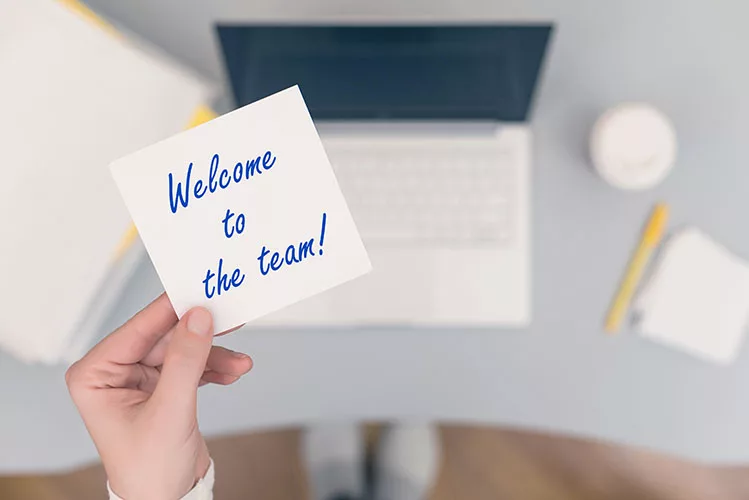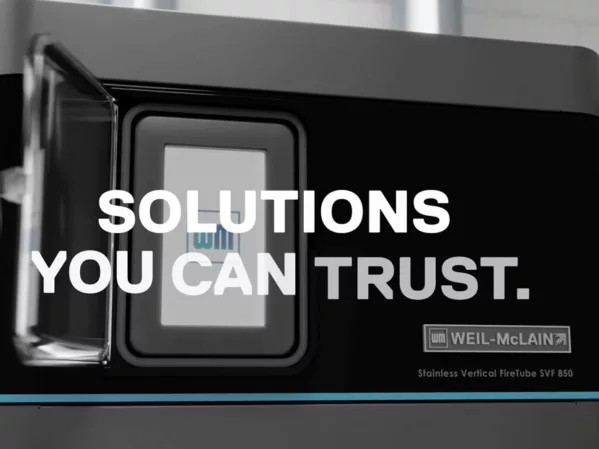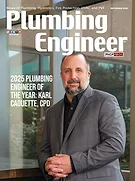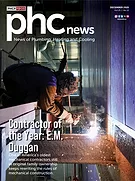In the middle of last July, I left a company I had worked at for more than 17 years for another. While I had been planning and thinking about making a change for five months before I started looking elsewhere in late April, I was still daunted by everything involved in the process.
Understanding what I wanted in my next job and why, researching potential employers, polishing a resume, preparing and sitting for interviews, negotiating offers, and then choosing the best one for me and my household were all part of it. While it wasn’t an impulsive decision and I put plenty of thought and planning into it beforehand, it still became another job once I started looking.
If you’re reading this magazine, chances are your career already occupies a huge portion of your life, and given that, you shouldn’t settle for a job that doesn’t adequately satisfy or reward you. That belief is what got me started in the process, and while I can honestly say there are few things I would have done differently, it was still a huge learning experience.
I’ve helped more people than I can remember navigate their careers, and if you’re in a similar spot as I was, what worked for me might also work for you.
Understand the why
Before you put yourself on the job market, have a good understanding of why you’re considering it. Understanding the why establishes what’s important to you and what you want to get out of a job change. If you rush this process, you run a serious risk of taking the first job that sounds good and making a bad decision.
For me, understanding the why took several months of thought and reflection. It involved taking account of what I wanted to get out of my career and coming to the realization that I wasn’t going to get it if I stayed where I was, among a few other reasons. You may have the same reasons or others for wanting something different — more career opportunities, work/life balance, compensation or benefits, schedule flexibility, and variety of work are all common ones. If you can, take your time with this; knowing that I had thought it through was a huge part in justifying making the jump. More importantly, it helped me understand what I wanted in my next role.
Understanding what you want and why is critical in making good career choices and deciding what roles to pursue. If you don’t match your next role to the most important things to get out of it, you’ll likely do it again later. Make a list of everything you want and rank them by importance, even if it takes weeks of thought and reflection.
Among other things, I discovered that my most important wants were career-oriented things such as opportunities in project management, business capture and development, markets beyond health care, and mentoring and developing other engineers.
Also high on the list were company- and culture-related items such as preference for an integrated (architecture and engineering) firm, a work culture matching my values and personality, company leadership that saw value in industry involvement (including writing articles like this one), an impressive project portfolio with recognizable clients, and rewards for doing great work.
Lower on the list but still important were more tangible things such as a flexible schedule, a commute in under 30 minutes, a casual office environment with semi-private workspaces, a good health-care plan and colleagues that I felt would support me when I needed it. Hundreds of other things could be important to you, but I hope these give you ideas on what to consider when you’re making your list.
Almost equally important to understanding what you want is understanding what you don’t want. Making a list of these items might be easier than figuring out what you do want — most people change jobs because of dissatisfaction in their current role or company. I knew immediately I didn’t want to go to a large corporate environment where it was difficult to stand out or one without an established plumbing team.
Be sure to identify which ones are deal-breakers: things you are not willing to accept, no matter how good the rest looks. Then hold fast to them when you execute the process — almost all job seekers I’ve talked to who have negotiated on deal-breakers have regretted it later. Most people’s deal-breakers will be monetary or put undue hardship on them or their household, as most of mine were. They included relocation, demotion, a pay cut, a bare-bones health-care plan and no bonus structure.
However, I also had a couple of career-related ones: a company that didn’t do health-care work or didn’t have avenues into project management and business development. Identify items like these early on when you can build resiliency for sticking to them; doing this later increases the chance you’ll negotiate on them.
Getting started
Once you’ve decided to find a new role, identify and gather your resources. These can be people who will guide and support you in the process, such as family, friends, colleagues, career coaches and recruiters. They can also be research sources to gather information about potential employers, resume writing, interview preparation, negotiation tactics, giving notice to your current employer, and more.
I strongly encourage you to gather a support network for the process. It can be strenuous, exhausting and unpredictable, and doing it alone only compounds each of those things. Be very deliberate and selective about who you choose though. Information travels almost instantaneously now, and you’ll be in a tough spot if your employer finds out you’re looking elsewhere.
Keep as much control over the flow of information as you’re comfortable with. I was very secretive during the process. Beyond the people who interviewed me, only my wife, parents and siblings knew, and I asked them to keep it in confidence.
I only used a personal email and phone number for correspondence with the companies I was talking to, and I even went as far as to not send anything related over my employer’s Wi-Fi or VPN. I did not even turn on the Open To Work switch on LinkedIn out of concern that the wrong person would see it. Set your own comfort level according to what the risk would be if your employer found out. Since I held the health insurance my wife relied on, I wasn’t willing to take chances.
Most of your research resources will be on the internet. However, if you have colleagues you trust who have or do work at companies you’re considering, they can be more valuable than anything you can find online when choosing which ones to pursue. Ask them for candid feedback on their roles and companies, tailor your questions to your items of importance and use that in the vetting process.
One of your resources might be a recruiter. Recruiters can be valuable in getting you interviews in companies you may have yet to consider but be aware of how they operate before you decide to work with one. Recruiters ultimately work for the companies that hire them to fill positions and they make their money on commission, which is often a percentage of a candidate’s starting salary. They stand to make more money by moving candidates through faster and not by negotiating for higher salaries, so do not expect them to work to get you a better offer.
Additionally, you are your own best advocate in the process; you are the best one to sell your worth to an employer. For these reasons, I did not use a recruiter when I started looking; I instead relied on the professional connections I already had. However, a recruiter may find an open position faster if you are still early in your career and working on building relationships.
Ensure your resume is polished and ready to go before reaching out to potential employers. Thousands of resources are out there on resume writing, so I’ll only give my two most important insights here:
1. Don’t be modest. You are trying to sell the best version of yourself and will want to stand out against your competition. Use whatever skills and experiences you have to do it. Don’t think you’re limited to one page, especially if you’re experienced. I used two pages and no one commented on it.
2. Tailor your resume to the role and company you’re sending it to. For example, having a list of relevant past projects on your resume is a good idea. However, you might change the ones you include based on who you send it to. For example, if the company does a lot of health-care work, list your best health-care projects and strip out the less relevant ones. Or if you’re pursuing a project manager role, highlight the past projects where you’ve already done it.
Interviewing
Interviewing is a complex subject demanding its own article, but I’ll share four tactics that worked well for me.
1. Read the room. Take note of your interviewers’ communication style and adapt yours to match. If the tone gets informal and conversational right away, go with it. You’ll be much more comfortable that way, and so will they.
2. Don’t overdo it. You should certainly prepare for interviews but using the time to squeeze in every last bit of technical knowledge and project experience you have isn’t always best. More now than ever, companies use interviews primarily to see if you’ll work well with the rest of their staff, which can be at least as valuable to them. Spend at least some of the time showing how you’d be a fit for them.
3. Anticipate their questions. If you have something on your resume that might raise a question, be prepared to discuss it. For example, I had only a seven-month tenure with one of my past employers before I left, and every interviewer asked about this. Lean on the people in your support network to help identify these.
4. Interview them. Too many jobseekers forget that they’re interviewing potential employers as much as they are being interviewed. Discuss your career goals along with other things that you’ve identified as important and see how the interviewer reacts. Don’t be afraid to ask hard questions such as “What does it take to stand out here?” and “Is there anything we’ve discussed that would make you hesitate to hire me?” If you have questions you think could hurt your chances, save them until you have an offer.
Negotiating
For most, negotiation isn’t an easy skill to learn, and many people are so uncomfortable doing it that they won’t even try. However, it can show that you’re confident and know your worth. It can also be a valuable skill to illustrate if you’re pursuing a role that involves it. If you feel a need to negotiate, wait until you have a written offer in hand; even better if you have several.
At that point, the worst the company can do is say no to your asks. If the offer is rescinded because you tried to negotiate, that’s not a company you want to work for.
Negotiation is complex enough that there are entire professional courses on it. However, if you don’t want to take one of those, I’d recommend reading “Never Split The Difference” by Chris Voss, a former top hostage negotiator for the FBI. It’s one of the best books I’ve read on any subject, and its lessons can be implemented immediately. I employed several of them during the process with success and others in my work since.
Evaluating
Once you have your best-negotiated job offers in hand, it’s time to evaluate them against each other. I created a multiple-tab spreadsheet to compare monetary things: salary, health care and other benefit costs, bonus structure and cost of commutes.
Make sure you include the hidden gains and losses: commute, employer retirement plan match, cost of living if you’re relocating and parking can all make a difference. A higher salary may not look as good if you’re going to end up paying more out of pocket for health care.
I also used the spreadsheet to compare less tangible things: company culture, schedule flexibility, advancement opportunities, number of support staff, technical expertise, project portfolios and even workspace setup. I then ranked each item according to its importance to me, tallied the scores, and used that to help with my decision.
Engineers are geared toward making decisions by things that can be measured, so I recommend doing something similar. If it helps, discuss everything with members of your support group, especially if they’re a stakeholder in the decision. Don’t be afraid to sleep on it for a night or two either.
Final lessons
Beyond everything else I’ve discussed, I took several other pieces of advice away from the experience.
• Be flexible. While most companies understand that you’re still working the job you intend to leave, having to correspond and interview during normal work hours is almost inevitable. Be prepared to take time off from your current job to do this, and to correspond and interview on short notice. Employers often want to move quickly to avoid losing a good candidate.
• Be present. If you can interview in person instead of virtually, take it. You can convey a much better picture of yourself in person than through a screen. It will also allow you a more personal connection with your interviewers, allow you to see their workspaces and meet your future team members.
• Be patient. The process is probably going to take longer than you think. Even with three potential employers, I thought I’d be done in a month and it took more than twice that. Interviews and follow-ups had to be scheduled with multiple people, I asked lots of questions about benefit details, references had to be called and holidays happened in the middle of it.
• Be transparent. Since the process can take a while to play out, keep everyone updated on where you are in it and check in often. I made it clear to each employer early on that I wouldn’t make a decision until I had a chance to compare all my offers. I kept one waiting for more than a month and nearly ended the process when I started feeling guilty about it. I was glad I waited in the end — the last offer was the best of the three and was ultimately what I went with.
Aaron Bock, PE, is a senior plumbing engineer at Eppstein Uhen Architects (EUA). He has been designing plumbing systems primarily for the health-care industry for more than 17 years and has set on several related national thought leadership groups. He is a past president and current vice president-legislative for the American Society of Plumbing Engineers’ Wisconsin chapter.






